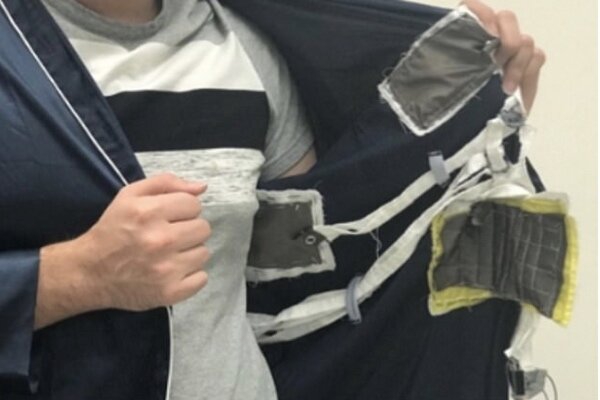Saturday 14 September 2019 - 18:24
Story Code : 359020
Iranian researchers at UMass Amherst design 'smart pyjamas'
According to Daily Mail, two Iranian researchers at the University of Massachusetts, Ali Kiaghadi and S. Zohreh Homayounfar, have developed a garment containing unobtrusive, portable devices for monitoring heart rate and respiratory rhythm, suitable for wearing when going to sleep.
The technology-enhanced garment - dubbed 'phyjamas' - will be presented at the Ubicomp 2019 conference in London, this week.
A paper detailing the work, oversaw by Professor Trisha L. Andrew and scientist Deepak Ganesan, will be published in the Proceedings of the ACM on Interactive, Mobile, Wearable and Ubiquitous Technologies, according to the report.
"The challenge we faced was how to obtain useful signals without changing the aesthetics or feel of the textile," Andrew told Daily Mail.
Ganesan adds, "Our insight was that even though sleepwear is worn loosely, there are several parts of such a textile that are pressed against the body due to our posture and contact with external surfaces. This includes pressure exerted by the torso against a chair or bed, pressure when the arm rests on the side of the body while sleeping, and light pressure from a blanket over the sleepwear."
"Such pressured regions of the textile are potential locations where we can measure ballistic movements caused by heartbeats and breathing and these can be used to extract physiological variables."
The team has designed a new fabric-based pressure sensor and combined that with a triboelectric sensor - one activated by a change in physical contact - to develop a distributed sensor suite that could be integrated into loose-fitting clothing like pajamas.
They also developed data analytics to fuse signals from many points that took into account the quality of the signal coming in from each location. The authors report that this combination allowed them to detect physiological signals across many different postures.
They performed multiple user studies in both controlled and natural settings and showed that they can extract heartbeat peaks with high accuracy, breathing rate with less than one beat per minute error, and perfectly predict sleep posture.
"We expect that these advances can be particularly useful for monitoring elderly patients, many of whom suffer from sleep disorders,'" says Andrew.
This work was enhanced by Ganesan and Andrew's affiliation with UMass Amherst's Institute of Applied Life Sciences (IALS), which focuses on translating life science research into products that improve human health.
# Tags











